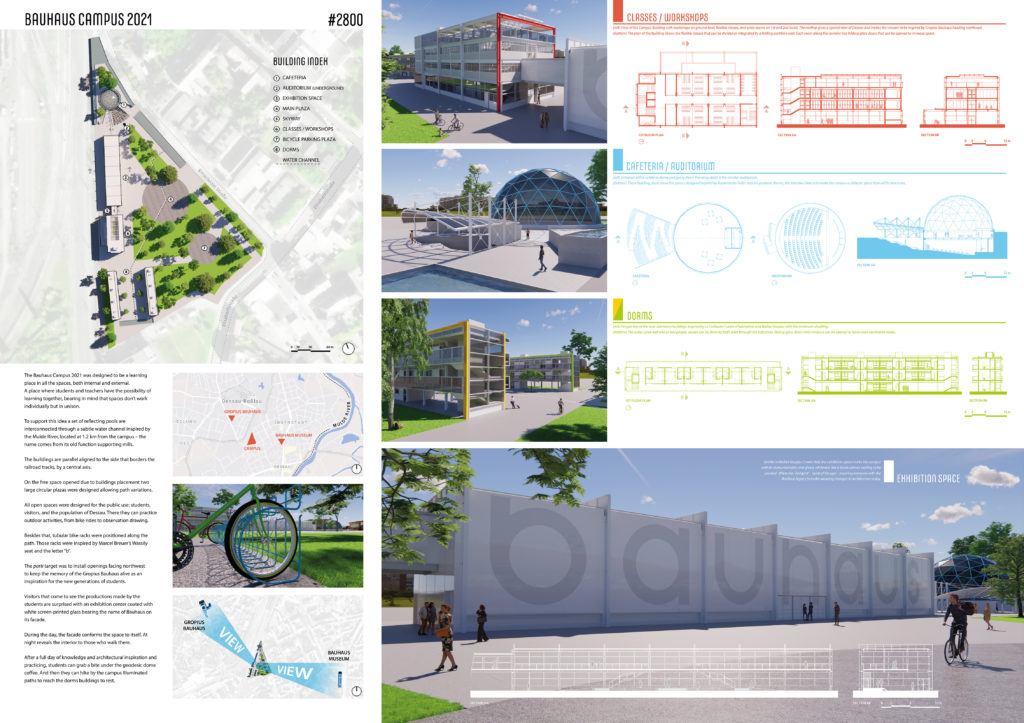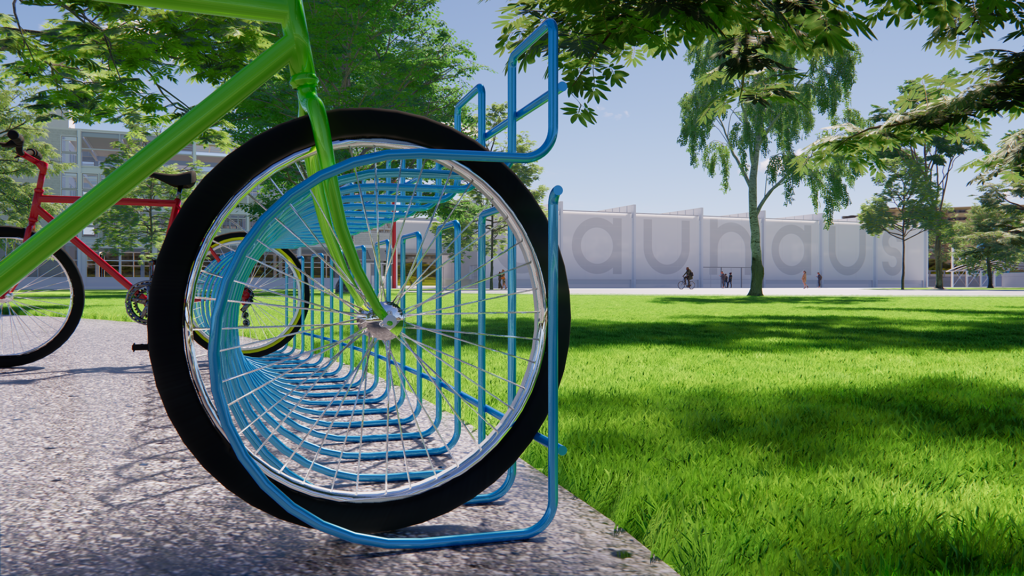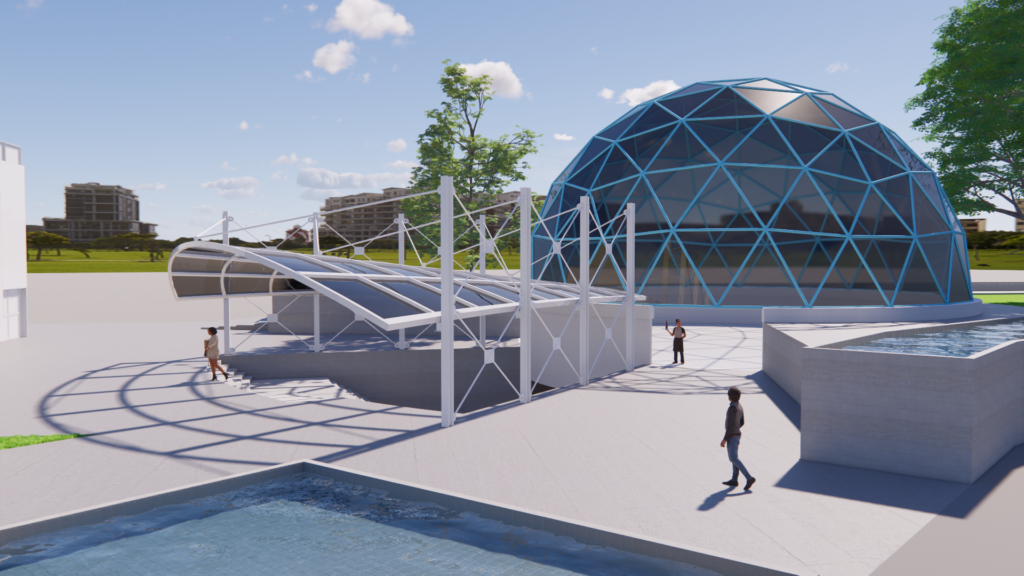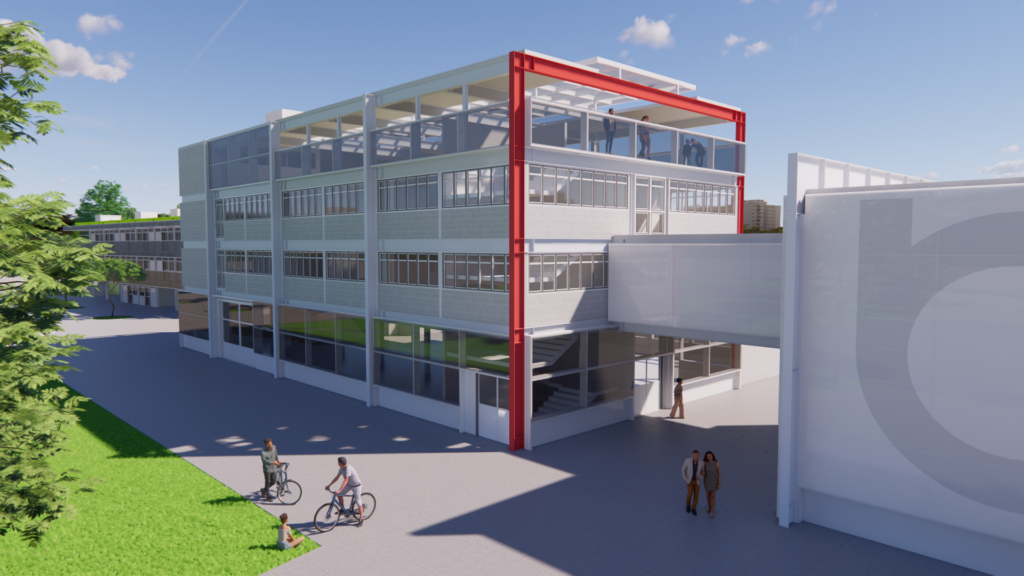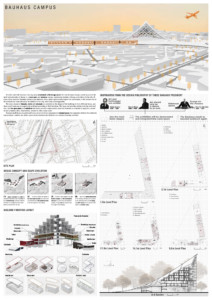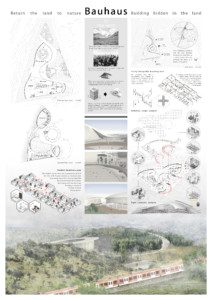Bauhaus Campus 2021
The Bauhaus Campus 2021 was designed to be a learning place in all the spaces, both internal and external.
A place where students and teachers have the possibility of learning together, bearing in mind that spaces don’t work individually but in unison.
To support this idea a set of reflecting pools are interconnected through a subtle water channel inspired by the Mulde River, located 1.2 km from the campus – the name comes from its old function supporting mills.
The buildings are parallel aligned to the side that borders the railroad tracks, by a central axis.
On the free space opened due to buildings placement, two large circular plazas were designed allowing path variations.
All open spaces were designed for public use: students, visitors, and the population of Dessau. There they can practice outdoor activities, from bike rides to observation drawing.
Besides that, tubular bike racks were positioned along the path. Those racks were inspired by Marcel Breuer’s Wassily seat and the letter “b”.
The parti target was to install openings facing northwest to keep the memory of the Gropius Bauhaus alive as an inspiration for the new generations of students.
Visitors that come to see the productions made by the students are surprised with an exhibition center coated with white screen-printed glass bearing the name of Bauhaus on its facade.
During the day, the facade conforms the space to itself. At night reveals the interior to those who walk there.
After a full day of knowledge and architectural inspiration and practicing, students can grab a bite under the geodesic dome coffee. And then they can hike by the campus illuminated paths to reach the dorm buildings to rest.
CLASSES/WORKSHOPS
[left] View of the Campus Building with workshops on ground level, flexible classes, and extra rooms on 1st and 2nd levels. The rooftop gives a special view of Dessau and invites the viewers to be inspired by Gropius Bauhaus heading northwest.
[bottom] The plan of the building shows the flexible classes that can be divided or integrated by a folding partition wall. Each room along the corridor has folding glass doors that can be opened to increase space.
CAFETERIA/AUDITORIUM
[left] Entrance of the cafeteria dome and going down the ramp stairs is the circular auditorium.
[bottom] These building plans show the spaces designed inspired by Buckminster Fuller and his geodesic domes, the intention here is to make the campus a didactic space from all its structures.
DORMS
[left] Perspective of the twin dormitory buildings inspired by Le Corbusier’s unité d’habitation and Walter Gropius with the minimum dwelling.
[bottom] The suites serve well one or two people, access can be done by both sides through the balconies. Sliding glass doors and windows can be opened to have cross ventilation inside.
EXHIBITION SPACE
Similar to Walter Gropius Crown Hall, the exhibition space marks the campus with its monumentality and glossy whiteness like a blank canvas waiting to be painted. White like ‘Zeitgeist’ – ‘spirit of the age’ – inspiring everyone with the Bauhaus legacy to make amazing changes in architecture today.
